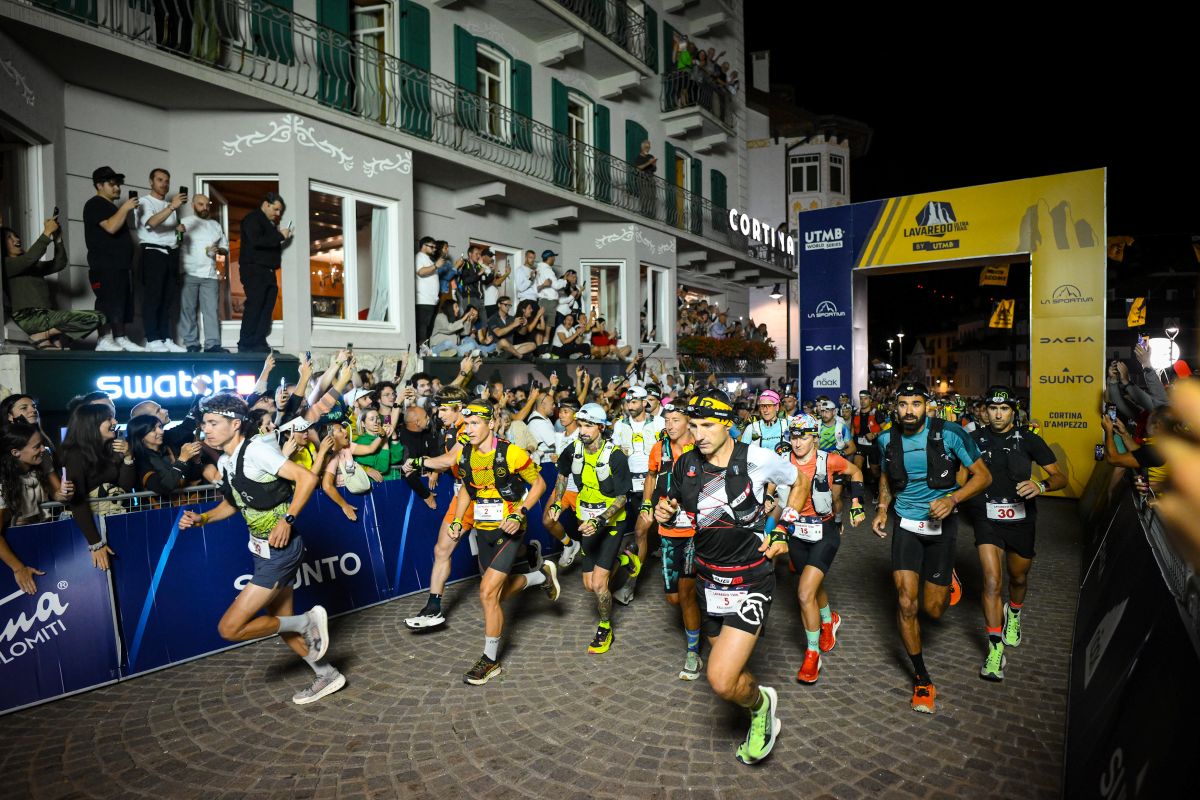 Summer is here, and the trail running and ultramarathon racing year is at its midpoint. Many runners have already completed a significant event on their calendars. Yet with summer days still long and high elevation trails emerging from their snowy cover, ample opportunities remain for memorable adventures and peak performances. Achieving success across multiple races in a single season — or maximizing the joy of trail running — depends on thorough preparation and, equally important, effective recovery.
Summer is here, and the trail running and ultramarathon racing year is at its midpoint. Many runners have already completed a significant event on their calendars. Yet with summer days still long and high elevation trails emerging from their snowy cover, ample opportunities remain for memorable adventures and peak performances. Achieving success across multiple races in a single season — or maximizing the joy of trail running — depends on thorough preparation and, equally important, effective recovery.
A rushed, or non-existent, recovery can ruin these perfectly laid summer and autumn races and adventures to come. Holistic ultramarathon recovery has been covered in this column before: though in the context of a year-end focus race. But what are some keys to a quick rebound from a mid-season event?
A well-executed recovery plan can accelerate a return to the trails with enhanced performance and well-being. This column presents six modern strategies to help runners recover swiftly and effectively from a mid-season race, ensuring they approach their next challenge with strength and confidence.

The start of the 2025 Lavaredo Ultra-Trail. Many of those who took part in the popular end-of-June race will be looking to compete again later in the season. Photo: UTMB World Series
1. Active Rest
Rest is essential for post-race recovery, but purely passive rest — avoiding running or most physical activity — may feel restorative yet fall short. The demands of rugged trail and ultramarathon racing impact the entire body, from muscles to metabolic systems. While passive rest soothes some systems, it can neglect others, such as the orthopedic system, which benefits from gentle movement to maintain mobility.
In our prior article on ultra recovery, we shared this useful guideline: “Rest from running for one day per 10 miles of high intensity race effort.”
In this post we add caveat: “Rest a day for 20 miles of slow ultra-distance running.”
This accounts for the mechanical stress of running and the neuroimmune and hormonal demands on the body. However, preserving tissue mobility is a critical component of recovery. Effective recovery balances rest for heavily taxed systems with gentle activation of others.
Recommendations
- Pause running for one day per 10 miles of high intensity racing or 20 miles of ultra-distance racing.
- Engage in daily movement for 15 to 30 minutes with low impact, high mobility activities, such as walking, yoga, light swimming, or dynamic stretching.
- Rest from the specific efforts of your race or event: If you raced a hard trail or ultramarathon race, keep the active heart rate well below that working effort, ideally into the lower zone 2 or even zone 1 aerobic levels. This allows for feel-good physical activity while still resting those specific neurological, cardiac, and metabolic “gears” utilized on race day.
- Promote active fluid return: Help facilitate fluid return from the legs to the central body, using high tech gadgetry like pneumatic compression boots, or simply lying with feet elevated against a wall.

iRunFar’s Meghan Hicks stretching at home, the standard kneeling couch stretch for the quadriceps and hip flexors. Photo: iRunFar/Meghan Hicks
2. Power Down Social Media
In an era of constant exposure to competitive races and epic adventures, stepping away from social media is vital for mental and emotional recovery. The relentless stream of others’ achievements can disrupt the rest needed after a grueling ultramarathon. To fully engage in recovery, runners benefit from temporarily disconnecting from digital noise to focus inward.
After a race, sharing photos and reflections on social media can be rewarding. However, true rest involves setting boundaries to prioritize presence and recovery. Taking time to savor the accomplishment — without comparing it to others’ adventures — helps restore mental clarity and prepares runners for future challenges.
Recommendations
- Share thoughtfully: Create and post a race or adventure summary, then step back.
- Take a break: Starting within two or three days post-event, avoid social media for at least two or three days, or limit engagement to brief periods.
3. Utilize Technology
Training and recovery technology is growing in utility and ubiquity. If you use it, make the most of it.
Recommendations:
- Monitor resting heart rate, heart rate variability, and sleep quantity and quality.
- Avoid regular training until these variables are within typical values.

The Suunto Race is one of many GPS watches to offer activity and health metrics tracking in addition to heart rate monitoring. Photo: iRunFar/Eszter Horanyi
4. Heal Your Gut and Fuel Your Body
Many systems beyond the orthopedics are strained to the max during rugged trail and long ultramarathon events. With huge overlaps with the nervous, hormonal, and immune systems, the gut may be the most crucial body system upon which to focus recovery strategies.
And while eating enough good food is a great starting point, the entire gastrointestinal system, which has been put under heavy strain, will benefit from a comprehensive recovery strategy.
Recommendations
- Nutritional supplementation: Supplements like creatine and collagen peptides have tremendous utility for the whole body, but these two are crucial for gut repair, the former for the neuro-immune system of the gut and the rest of the body, and the latter to repair the muscle and connective tissue of the gut structure. Within the gut, some key internal repair and health supplements worth considering include L-glutamine — a key repair tool for the gut lining — and lactoferrin and coconut oil — two powerful and natural antibiotic and antimicrobials.
- Avoid inflammation: Nutrition optimization is highly individualized, but one certainty is that some foods are inflammatory for some people. Avoid foods that are knowingly irritable or inflammatory for you. That might include common offenders like wheat, dairy, or corn. Or for many, this could include ultra-processed foods. Eat whole foods, but only those that agree with your unique system.
- Move the gut: Besides doing all that work under tough conditions, the gut also bounces in the pelvis and ribcage three times per second! After a few days’ rest, mobilize the gut gently using a massage ball, and consider belly-enhanced hip and back stretches. This is a win-win for both the gut function and optimal hip and back mobility restoration.
5. Walk, Then Run
A brisk walk can tell you more about your mechanical integrity than a shuffle-y run because it requires full mobility of the ankles and hips, which can inform you of any key mobility imbalances.
Recommendations
- Start easy: While resting from running, start easy walking. This provides active mobility while keeping intensity very low. This will give you early clues on relevant stiff areas.
- Mobilize any stiff areas that arise during and after walks. Common issues you may feel during walks, as opposed to super-easy runs, include stiffness in ankle dorsiflexion and hip extension.
- Up the pace: As you feel better, walk faster. Bend the ankles, extend the hips, and get the heart beating into the high zone 1 range.
- Add an incline: Lastly, before running, hike briskly uphill. Set a treadmill to 10 to 15% grade and walk at a brisk pace. For most, this will replicate a flat easy-run heart rate, but without the impact stress, and with enhanced hip and ankle mobility.
- Find your stride: When it’s time to run, “find your stride.” Be able to find your best, most efficient stride before returning to full training.
6. Train Like a High School Runner
I love this idea because it allows for all the key elements of effective training, but still providing relative rest. Most trail runners and ultrarunners train and adventure like beasts: big miles, hard runs, huge vertical, insane long runs. But when you’re in recovery, it’s time to return to your roots.
Recommendations
- Run low volume, but most days of the week: High schooler runs five to six days a week but seldom more than 35 to 50 miles per week. Run frequently but short and easy in your initial build-up.
- Run fast: High school runners train fast! They sprint or run mile- to 5-kilometer-race paces upward of three times a week. Despite what it may feel like, doing high intensity, short-duration workouts like 200-, 400-, or 800-meter intervals is far outside the well-worn trail running and ultramarathon well you just emptied. Blasting into this high gear for short sessions will bypass the “medium-hard, all-day” ultra gear, still providing rest but also “waking up” the neuromuscular system.
- Run shorter long runs: Keep the weekend long runs within the realm of an underclassman — eight to 12 miles — in those early weeks. Long enough to feel productive, but still only a fraction of the volume found in a typical ultra training block.
- Reverse the taper: Once the systems are feeling robust — good sleep and recovery metrics, gut is healthy, and orthopedics feel normal — reverse the taper outward. Restore run frequency first, then speed and volume. Once those are reestablished, add in the race-specific paces, like long trail tempo runs.
- Resume normal service: When everything else feels good, add back in the “big kid long runs” over trails and mountains.

the last step in recovery is to reintroduce long runs in the mountains. Photo: iRunFar/Eszter Horanyi
Conclusion
Effective recovery is non-negotiable for ultrarunners aiming to thrive mid-season. Skimping on rest risks burnout, injury, or diminished performance, derailing the adventures ahead. By committing to these six strategies — active rest, gut health, technology, and more — runners safeguard their bodies and minds, paving the way for remarkable experiences.
Like spending a bit of extra, but well-executed time in an aid station, a perfect recovery period may lead to your best-ever race and adventure ahead. Invest the time and effort to recover thoroughly, and the trails will reward that dedication with stronger, more joyful performances. Recover your best now for epic runs tomorrow.
Call for Comments
- Have you raced lately?
- If so, how is your recovery going?

